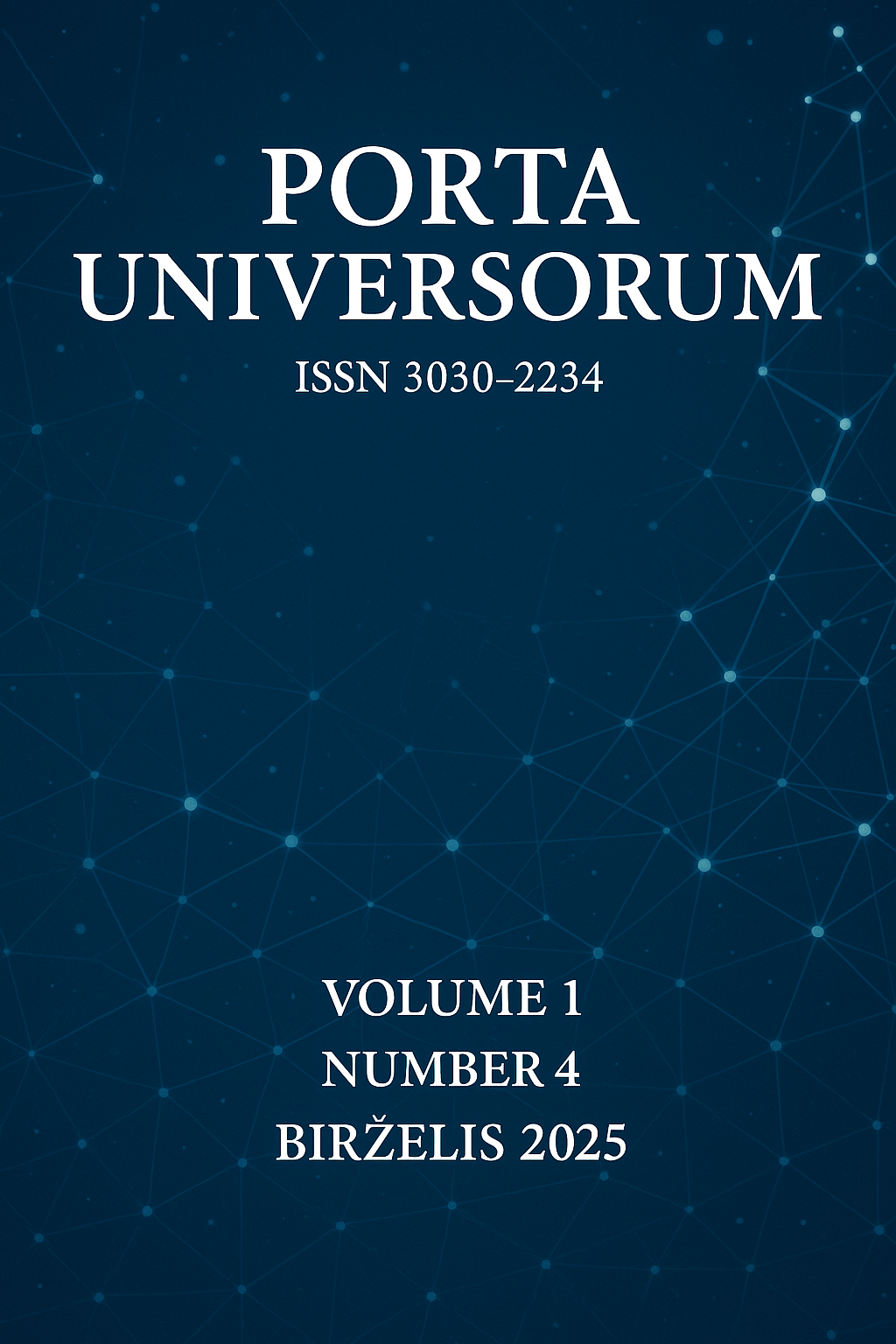Language - specific and interlingual phraseological units.
DOI:
https://doi.org/10.69760/portuni.0104009Keywords:
phraseological units, idioms, collocations, phrasal verbs, cross-linguistic transferAbstract
Phraseological units (PUs) – fixed word combinations such as idioms, collocations, binomials, and phrasal verbs – are a central component of English vocabulary. They often convey meanings that cannot be deduced from their individual parts and carry cultural nuance. This paper examines English phraseological units and analyzes how they transfer (or fail to transfer) across languages, with a focus on Azerbaijani, Turkish, and Russian. Using a contrastive analytic approach, we compare selected English idioms and collocations with their literal translations, calques, or native equivalents in the target languages. Baker’s (2011) typology of idiom translation strategies (e.g. finding an equivalent idiom, literal translation, or paraphrase) guides our analysis. We find that while some English expressions have close counterparts (e.g. “break the ice” → Turkish buzları kırmak), many are culture-bound or syntactically incongruent and require paraphrase or avoidance. English collocations (e.g. strong tea) often differ in adjective choice (Turkish demli çay, lit. “brewed tea”). Phrasal verbs pose particular challenges, as Turkic and Slavic languages typically lack direct analogues. These mismatches have clear implications for ESL learners and translators: instruction should emphasize semantic context and metaphor, not word-by-word rendering. We conclude by offering pedagogical recommendations for teaching English phraseology (e.g. using corpora and contrastive examples) and for translator training (e.g. raising awareness of non-equivalence and strategy use).
References
Baker, M. (2011). In other words: A coursebook on translation (3rd ed.). Routledge.
Howarth, P. (1998). Phraseology and second language proficiency. Applied Linguistics, 19(1), 24–44. https://doi.org/10.1093/applin/19.1.24
Lewis, M. (2000). Teaching collocation: Further developments in the lexical approach. Language Teaching Publications.
Nesselhauf, N. (2003). The use of collocations by advanced learners of English and some implications for teaching. Applied Linguistics, 24(2), 223–242. https://doi.org/10.1093/applin/24.2.223
Rasul, S. H. (2018). Translation of idioms across languages. Transletters: International Journal of Translation and Interpreting, 1(1), 121–141.
Veisbergs, A. (2013). Phraseological units and idioms: East and West and where do we stand. Baltic Journal of English Language, Literature and Culture, 3, 109–121. https://doi.org/10.22364/BJELLC.03.2013.09
Sadigova, S. (2024). A comparative analysis of idiomatic expressions in English and Azerbaijani: Cultural and linguistic insights. Acta Globalis - Humanities and Social Sciences, 14(2), 83–105. https://doi.org/10.69760/aghel.024061
Edmonds, A., & Aarnes Gudmestad, H. (2023). Phraseological use and development during a stay abroad: Exploring sensitivity to frequency and cue contingency. Language Learning, 73(2), 475–507. https://doi.org/10.1111/lang.12547
Baker, M. (1992). In other words: A coursebook on translation. Routledge.
Sinclair, J. (1991). Corpus, concordance, collocation. Oxford University Press.
Nattinger, J. R., & DeCarrico, J. S. (1992). Lexical phrases and language teaching. Oxford University Press.
Cowie, A. P., & Howarth, P. (Eds.). (1996). Phraseology: Theory, analysis, and applications. Oxford University Press.
Chesterman, A. (1997). Memes of translation: The spread of ideas in translation theory. John Benjamins.
Vinay, J.-P., & Darbelnet, J. (1958). Stylistique comparée du français et de l’anglais. Didier.
Lewis, M. (1997). Implementing the lexical approach. Language Teaching Publications.
Baković, E. (2017). The metaphorical structure of idioms and cross-linguistic differences. Journal of Pragmatics, 116, 1–13. https://doi.org/10.1016/j.pragma.2017.01.002
Ellis, N. C. (1996). Sequencing in SLA: Phonological memory, chunking and points of order. Studies in Second Language Acquisition, 18(1), 91–126. https://doi.org/10.1017/S0272263100014379
Kjellmer, G. (1991). A mint of phrases. In K. Aijmer & B. Altenberg (Eds.), English corpus linguistics (pp. 111–127). Longman.
Kövecses, Z. (2010). Metaphor: A practical introduction (2nd ed.). Oxford University Press.
Odlin, T. (1989). Language transfer: Cross-linguistic influence in language learning. Cambridge University Press.
Rixon, S. (2000). Idioms. In R. Carter (Ed.), The Cambridge guide to teaching English to speakers of other languages (pp. 92–96). Cambridge University Press.
Downloads
Published
Issue
Section
License
Copyright (c) 2025 Porta Universorum

This work is licensed under a Creative Commons Attribution-NonCommercial 4.0 International License.
License Terms
All articles published in Porta Universorum are licensed under the Creative Commons Attribution–NonCommercial 4.0 International License (CC BY-NC 4.0). This license permits:
-
Sharing (copying and redistributing the material in any medium or format),
-
Adapting (remixing, transforming, and building upon the material),
-
for non-commercial purposes only,
-
with proper attribution to the original author(s) and source.
Commercial use of the material is not permitted without prior written permission from the publisher.




